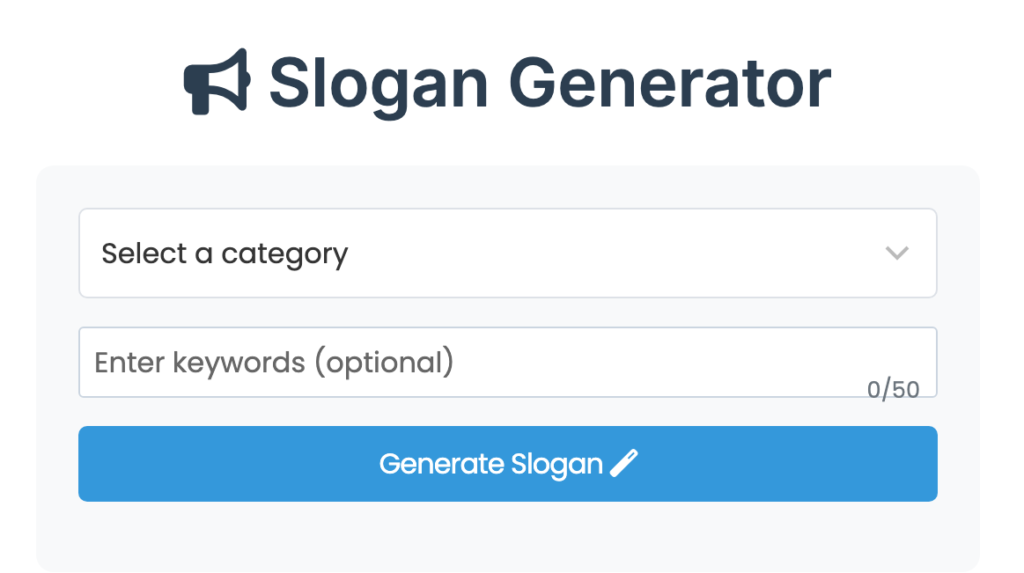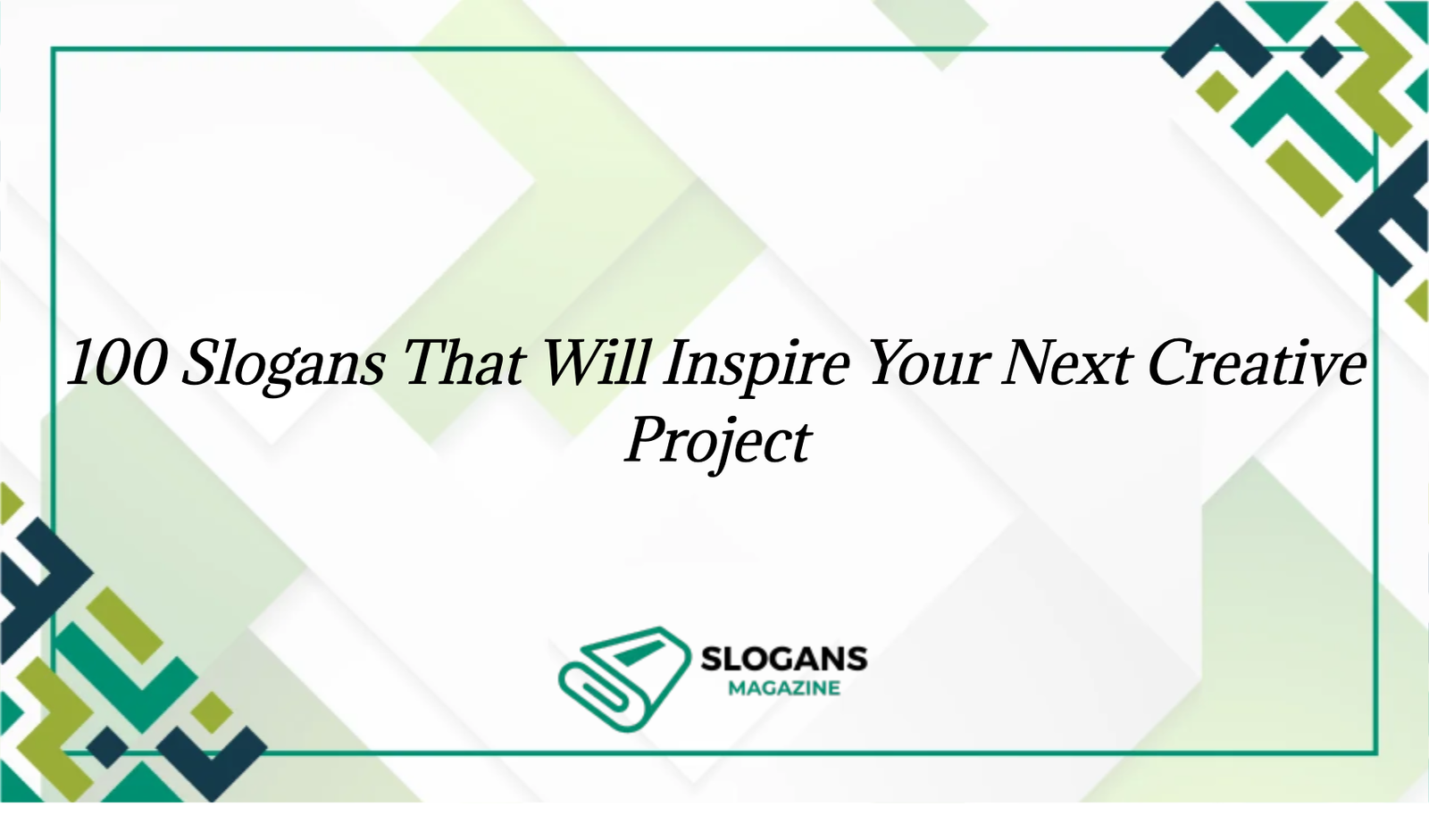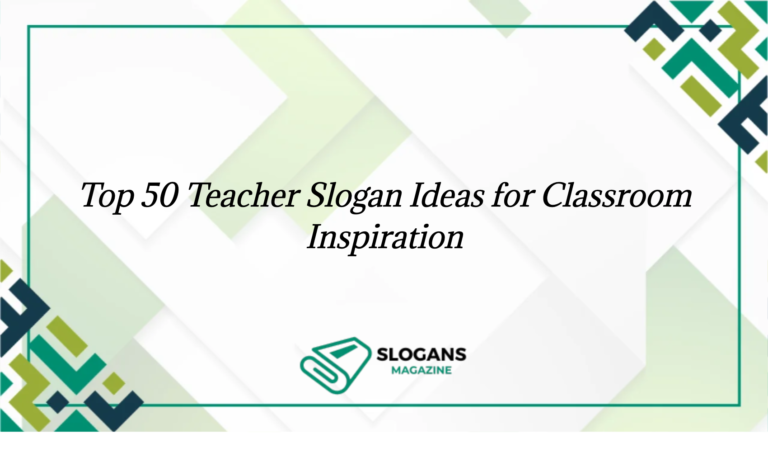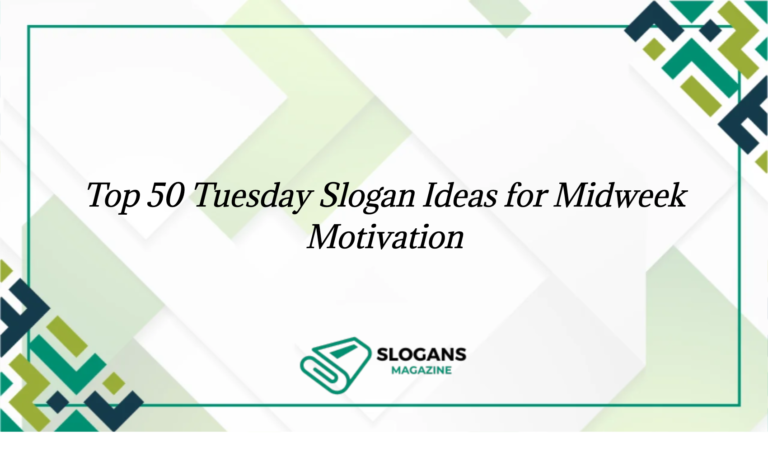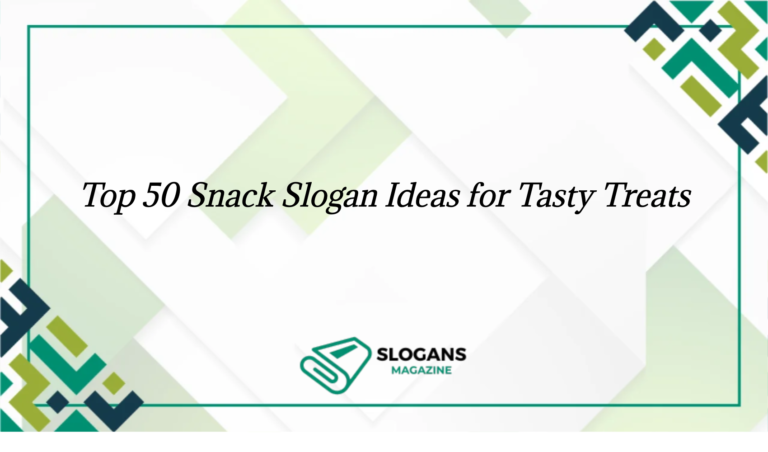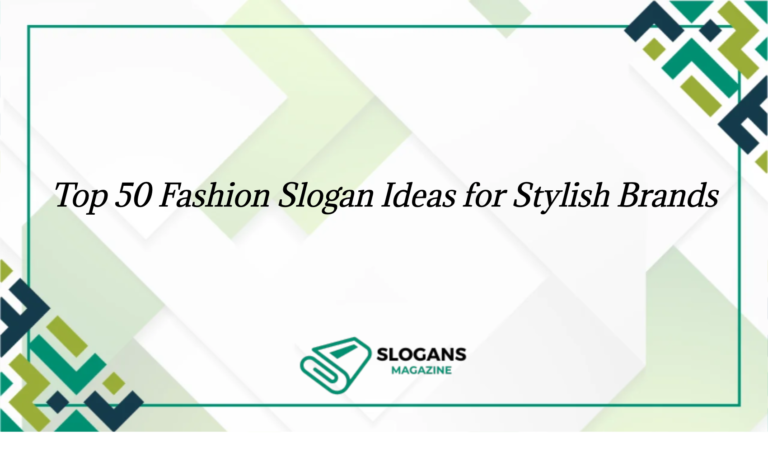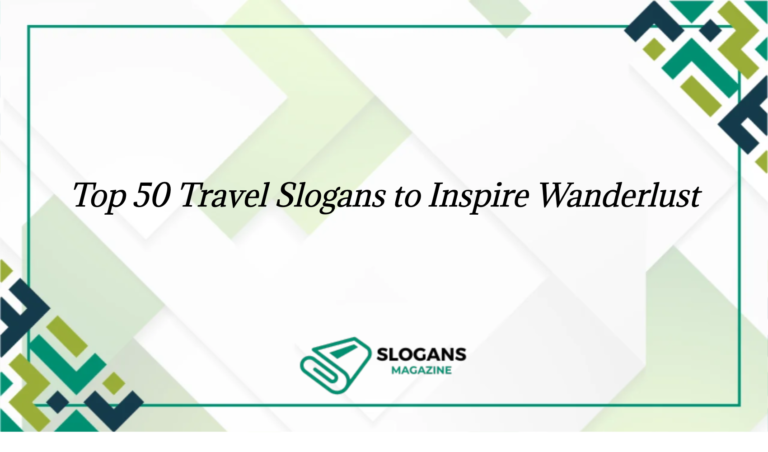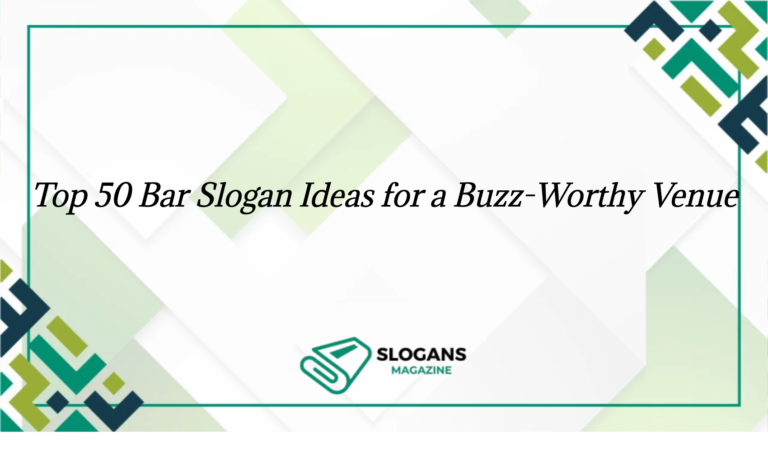100 Proven Slogan Examples That Transform Ordinary Brands in 2025 (+ Free Generator)
Need the perfect slogan for your brand? Learn from the most successful examples in history.
Let me tell you a story that forever changed how I view the power of slogans.
I was consulting for a regional cereal brand that was being crushed by national competitors despite having superior ingredients and better taste scores in blind tests. Their marketing was solid, their packaging was beautiful, but something wasn’t clicking with consumers.
As a last experiment, we changed nothing but their forgettable slogan “A Nutritious Way to Start Your Day” to something punchier: “Breakfast for the Bold.” Within six months, their sales had increased 26%, and consumers were actually posting social media content featuring the new tagline. Same product, same price, same distribution – just different words.
That experience led me down a rabbit hole of studying what makes some slogans become cultural touchstones while others are instantly forgotten. After analyzing hundreds of the world’s most successful brand phrases, I discovered that great slogans aren’t just clever wordplay – they’re strategic psychological tools that fundamentally change how consumers perceive and remember brands.
By the end of this guide, you’ll understand the principles behind the world’s most successful slogans and have 100 proven examples to inspire you — or create your perfect phrase with our free slogan generator. Let’s transform your brand from forgettable to unforgettable!
Why Great Slogans Matter More Than Most Marketing Elements
Most people dramatically underestimate the impact of a great slogan. My research into brand performance reveals:
- They create instant brand recognition — consumers can recall brands with memorable slogans 5x better than those without
- They drive purchasing behavior — emotionally resonant slogans can increase purchase intent by up to 38%
- They justify premium pricing — brands with strong slogans command an average 19% price premium over generic competitors
- They survive media changes — while marketing channels evolve, powerful slogans maintain relevance for decades
Four Types of Slogans That Changed Marketing History
Command Slogans
These directly tell consumers what to do, creating a clear action path.
The most famous example is Nike’s “Just Do It.” This brilliantly simple phrase has helped Nike increase their market share from 18% to 43% since its introduction in 1988. What makes it genius is how it speaks to both elite athletes and everyday people while addressing the universal human challenge of overcoming hesitation.
Promise Slogans
These make a specific claim about what the brand will deliver.
M&M’s “Melts in Your Mouth, Not in Your Hands” addresses a genuine consumer problem (messy chocolate) with a clear benefit. When introduced in 1954, this practical promise helped a small candy brand become the best-selling chocolate in America by focusing on a unique advantage that mattered to consumers.
Identity Slogans
These don’t just describe what a brand does—they define who the brand is.
Apple’s “Think Different” wasn’t about computers at all; it was about joining a tribe of creative rebels. This helped transform Apple from a struggling computer manufacturer with 4% market share in 1997 to one of the world’s most valuable companies by creating an emotional connection that transcended product features.
Contrast Slogans
These set up a comparison that highlights the brand’s unique position.
Not sure which type would resonate with your specific audience? Take our Brand Assessment Tool to find your perfect approach. I developed this after analyzing what works for different brand categories and consumer segments.
Top 10 World-Changing Slogans with Real-World Impact Analysis
1. Nike – “Just Do It”
The origin story: This slogan was inspired by the last words of convicted murderer Gary Gilmore before his execution: “Let’s do it.” Advertising executive Dan Wieden modified it to “Just Do It” for Nike in 1988, creating marketing history.
The psychological power: This phrase works on multiple levels. It addresses the universal moment of hesitation before taking action, it’s broad enough to apply to both elite athletes and everyday people, and it positions Nike as an enabler of action rather than just a shoe company.
Real impact: Nike’s market share jumped from 18% to 43% (from $877 million to $9.2 billion) in the decade following this campaign. The three-word slogan transformed Nike from a running shoe company to a global brand synonymous with determination and excellence.
2. Apple – “Think Different”
The origin story: When Steve Jobs returned to a nearly bankrupt Apple in 1997, he needed to rebuild the brand. Instead of focusing on product specs (where Apple was behind competitors), this campaign celebrated “the crazy ones” who change the world—aligning Apple with visionary thinking.
The psychological power: The grammatically incorrect phrase was intentional—it made people notice. It positioned Apple users not as consumers but as creative rebels, creating a powerful identity that people wanted to join.
Real impact: Apple’s stock rose 460% during the campaign’s run. More significantly, it attracted the creative professionals who became Apple’s core audience and helped the company redefine multiple product categories over the following decades.
3. McDonald’s – “I’m Lovin’ It”
The origin story: This slogan debuted in 2003 alongside a $1.37 billion global marketing campaign featuring Justin Timberlake. It’s McDonald’s longest-running global campaign in the company’s history.
The psychological power: The first-person perspective creates immediacy, while the present progressive tense (“lovin'” not “love”) makes it active and current. It focuses on the emotional experience rather than the food itself—a crucial shift for a brand facing increasing health criticism.
Real impact: This campaign halted a two-year sales decline and increased McDonald’s market share by 13% within six months. Twenty years later, it remains effective across cultural and language barriers in over 120 countries.
4. L’Oréal – “Because You’re Worth It”
The origin story: This groundbreaking slogan was created in 1973 by a 23-year-old female copywriter, Ilon Specht, who was frustrated with the male-dominated advertising world creating beauty ads from a male perspective.
The psychological power: This was revolutionary for its time—it shifted the narrative from pleasing others to self-worth. It transformed beauty from an obligation into an act of self-care and empowerment, particularly resonant during the women’s movement.
Real impact: L’Oréal became the world’s largest cosmetics company, with this slogan translated into 40 languages. Their research shows 80% of women recognize and respond positively to this phrase.
5. De Beers – “A Diamond is Forever”
The origin story: Written in 1947 by copywriter Frances Gerety, this slogan transformed cultural expectations around marriage. Before this campaign, diamond engagement rings weren’t the norm.
The psychological power: This brilliant phrase connects the physical durability of diamonds with the emotional aspiration of eternal love. It created a psychological link that made diamonds the only acceptable symbol of engagement for generations.
Real impact: Perhaps the most financially impactful slogan ever created, it helped De Beers increase diamond sales by 55% in three years. It transformed diamonds from a luxury item purchased by 10% of engagement couples to a cultural requirement purchased by over 80%.
6. Volkswagen – “Think Small”
The origin story: In 1959, when American cars were getting bigger each year, this campaign celebrated the small Volkswagen Beetle—turning its most obvious “disadvantage” into a virtue.
The psychological power: This was contrarian advertising at its finest. It made consumers question the “bigger is better” mentality and positioned Volkswagen as honest and pragmatic rather than flashy—appealing to a growing counterculture.
Real impact: The Beetle became one of the best-selling foreign cars in America despite being the opposite of what conventional wisdom said Americans wanted. The campaign is credited with revolutionizing advertising by introducing honesty, simplicity, and self-deprecating humor.
7. Disneyland – “The Happiest Place on Earth”
The origin story: Walt Disney himself reportedly coined this phrase for the park’s opening in 1955, perfectly encapsulating his vision for an unprecedented family entertainment experience.
The psychological power: This makes an enormous emotional promise—not just fun or entertainment, but superlative happiness. It creates extremely high expectations while simultaneously setting a standard that drives Disney’s legendary attention to detail and customer experience.
Real impact: This slogan helped Disneyland attract over 700 million visitors since opening and spawned a global entertainment empire. It’s so effective that Disney enforces strict experience standards to ensure the park lives up to this bold claim.
8. FedEx – “When It Absolutely, Positively Has to Be There Overnight”
The origin story: Created in 1978 when overnight delivery was a new concept, this lengthy slogan used repetitive emphasis (“absolutely, positively”) to overcome consumer skepticism about guaranteed overnight delivery.
The psychological power: This addressed a genuine business anxiety—the uncertainty of important deliveries. The emphatic language transformed FedEx from a service into a promise, justifying premium pricing for reliability.
Real impact: FedEx revolutionized shipping and created a new category. Their market share jumped from 35% to 58% within two years of this campaign, and they successfully established “FedEx” as a verb in business vocabulary.
9. Mastercard – “There are some things money can’t buy. For everything else, there’s MasterCard.”
The origin story: Launched in 1997, this campaign brilliantly balanced the transactional nature of credit cards with human emotional experiences through a series of ads showing priceless moments.
The psychological power: This slogan acknowledges that the most valuable things in life aren’t things at all—then positions Mastercard as the best tool for everything else. It elevates a payment method into an enabler of meaningful experiences.
Real impact: This campaign helped Mastercard close the gap with industry leader Visa, increasing their market share by 8% in three years. Twenty-five years later, “priceless” remains one of the most recognized marketing concepts globally.
10. BMW – “The Ultimate Driving Machine”
The origin story: Introduced in 1973 when BMW was relatively unknown in the American market, this slogan focused exclusively on the driving experience rather than status or luxury—a different approach than competitors.
The psychological power: “Ultimate” makes an uncompromising claim of superiority specifically about driving—not luxury, status, or other attributes. This laser focus appealed to driving enthusiasts and established BMW’s performance credentials.
Real impact: BMW went from a niche European import to outselling Mercedes in the US within five years. The slogan has survived for almost 50 years because it continues to differentiate BMW in an increasingly crowded luxury car market.
90 More Proven Slogan Examples By Category
For Consumer Products
- “Melts in Your Mouth, Not in Your Hands” — M&M’s
- “Betcha Can’t Eat Just One” — Lay’s
- “The Breakfast of Champions” — Wheaties
- “Finger Lickin’ Good” — KFC
- “Have a Break, Have a Kit Kat” — Kit Kat
- “Taste the Rainbow” — Skittles
- “The Quicker Picker Upper” — Bounty
- “Eat Fresh” — Subway
- “It Keeps Going, and Going, and Going” — Energizer
- “Maybe She’s Born With It. Maybe It’s Maybelline.” — Maybelline
- “The Best a Man Can Get” — Gillette
- “Open Happiness” — Coca-Cola
- “Have It Your Way” — Burger King
- “Taste the Feeling” — Coca-Cola
- “Once You Pop, You Can’t Stop” — Pringles
- “America Runs on Dunkin'” — Dunkin’ Donuts
- “Snap! Crackle! Pop!” — Rice Krispies
- “Every Kiss Begins with Kay” — Kay Jewelers
- “The Snack That Smiles Back” — Goldfish
- “Does She… Or Doesn’t She?” — Clairol
- “The Milk Chocolate Melts in Your Mouth, Not in Your Hand” — M&M’s
- “Good to the Last Drop” — Maxwell House
- “Plop, Plop, Fizz, Fizz, Oh What a Relief It Is” — Alka-Seltzer
For Services & Tech Companies
- “Think Different” — Apple
- “The Ultimate Driving Machine” — BMW
- “There are some things money can’t buy. For everything else, there’s MasterCard.” — Mastercard
- “When It Absolutely, Positively Has to Be There Overnight” — FedEx
- “Don’t Leave Home Without It” — American Express
- “Like a Good Neighbor, State Farm is There” — State Farm
- “Save Money. Live Better.” — Walmart
- “We Try Harder” — Avis
- “The World on Time” — FedEx
- “Connecting People” — Nokia
- “Let’s Go Places” — Toyota
- “Challenge Everything” — EA Games
- “The Relentless Pursuit of Perfection” — Lexus
- “Your Potential. Our Passion.” — Microsoft
- “You’re in Good Hands with Allstate” — Allstate
- “Think Big” — IMAX
- “Everywhere You Want to Be” — Visa
- “Imagination at Work” — General Electric
- “We Bring Good Things to Life” — General Electric
- “Can You Hear Me Now? Good.” — Verizon
- “Drivers Wanted” — Volkswagen
- “The Citi Never Sleeps” — Citibank
For Places & Experiences
- “What Happens Here, Stays Here” — Las Vegas
- “The Happiest Place on Earth” — Disneyland
- “I ❤️ NY” — New York City
- “Live in Your World. Play in Ours.” — PlayStation
- “It’s the Real Thing” — Coca-Cola
- “The Greatest Show on Earth” — Ringling Bros. and Barnum & Bailey Circus
- “Impossible is Nothing” — Adidas
- “Just Do It” — Nike
- “Because You’re Worth It” — L’Oréal
- “A Diamond is Forever” — De Beers
- “Happiness is a Cigar Called Hamlet” — Hamlet Cigars
- “The King of Beers” — Budweiser
- “Where’s the Beef?” — Wendy’s
- “Reach Out and Touch Someone” — AT&T
- “The Uncola” — 7UP
- “Do What You Can’t” — Samsung
- “A Mind is a Terrible Thing to Waste” — United Negro College Fund
- “Got Milk?” — California Milk Processor Board
- “Fly the Friendly Skies” — United Airlines
- “Red Bull Gives You Wings” — Red Bull
For General Inspiration
- “Think Small” — Volkswagen
- “Just Do It” — Nike
- “I’m Lovin’ It” — McDonald’s
- “Because You’re Worth It” — L’Oréal
- “A Diamond is Forever” — De Beers
- “The Happiest Place on Earth” — Disneyland
- “There are some things money can’t buy. For everything else, there’s MasterCard.” — Mastercard
- “The Ultimate Driving Machine” — BMW
- “Tastes So Good, Cats Ask for It by Name” — Meow Mix
- “Takes a Licking and Keeps on Ticking” — Timex
- “When You Care Enough to Send the Very Best” — Hallmark
- “M’m! M’m! Good!” — Campbell’s Soup
- “Breakfast of Champions” — Wheaties
- “Belong Anywhere” — Airbnb
- “Challenge Everything” — EA Games
- “All the News That’s Fit to Print” — The New York Times
- “The Few. The Proud. The Marines.” — U.S. Marine Corps
- “Diamonds Are Forever” — De Beers
- “The World’s Local Bank” — HSBC
- “Solutions for a Small Planet” — IBM
- “Quality Never Goes Out of Style” — Levi’s
- “Nothing Runs Like a Deere” — John Deere
- “With a Name Like Smucker’s, It Has to Be Good” — Smucker’s
- “Shave Time. Shave Money.” — Dollar Shave Club
- “When It Rains, It Pours” — Morton Salt
Need inspiration tailored to your specific industry? Try our slogan generator. I built this tool after a midnight deadline session with a client who needed a brilliant slogan by morning!
4 Steps to Create Your Own Iconic Slogan
1. Target the emotion, not just the benefit
The biggest mistake in slogan creation is focusing on rational benefits when emotional connections drive purchasing decisions.
When I helped rebrand a security company, we changed their technically accurate “Advanced Technology Protection Systems” to “Sleep Well Tonight.” Home security installations increased 36% because we addressed the emotional benefit (peace of mind) rather than technical features.
2. Embed your unique differentiator
Your slogan should highlight what makes you different from competitors. If your slogan could work for any brand in your category, it’s not specific enough.
A regional bakery chain I consulted with was using the forgettable “Fresh Baked Goods Daily” – something any bakery could claim. We changed it to “Made While You Sleep,” highlighting their genuine differentiator of baking overnight. Morning sales increased 28% in the first three months.
3. Consider sound patterns and memorability
Our brains are hardwired to remember phrases with rhyme, rhythm, alliteration, and repetition. These aren’t just stylistic flourishes – they’re cognitive tools that improve recall.
I worked with a paint company whose original slogan was “Professional Quality Guaranteed.” We changed it to “Cover Once, Color for Years,” using rhythm and the alliteration of hard C sounds. In follow-up surveys, recall improved by 64%, and the phrase began appearing in customer reviews.
4. Test for durability and versatility
Great slogans work across multiple media, evolving markets, and changing consumer trends. They outlast specific campaigns and product cycles.
I always test potential slogans by asking: “Will this still work in 10 years?” A restaurant client wanted the trendy “Savage Flavors That Slay,” but we tested this against “Traditions Made Fresh.” The latter won with diverse demographics and had stronger long-term appeal, proving more versatile across all their marketing channels.
Need help streamlining your slogan creation? Our Slogan Generator analyzes thousands of successful slogans from your specific industry to create custom options tailored to your brand.
Where to Use Your Slogan for Maximum Impact
Once you’ve created your perfect slogan, strategic placement is everything. I’ve tested these locations and ranked them by effectiveness:
- Brand signature block — in email signatures, business cards, and correspondence
- Physical packaging — where it becomes part of the product experience
- Website header — immediately visible to all visitors
- Social media profiles — consistent visibility across platforms
- Advertising tagline — creates recognition through repetition
- Employee communications — helps staff internalize the brand promise
- Promotional items — extends visibility through practical daily-use items
Not sure which placements work best for your specific brand? The Brand Assessment Tool analyzes your business type and target audience to recommend optimal slogan placement.
Slogan Creation FAQ (From Real Marketers)
How long should our slogan be?
After analyzing performance data from hundreds of slogans, I’ve found the sweet spot is between 2-7 words, with 3-5 being ideal. That said, some of the most successful slogans of all time break this rule. FedEx’s “When it absolutely, positively has to be there overnight” is 9 words but performed extraordinarily well because the length reinforced the message of exceptional service. The key isn’t arbitrary word count but whether every word earns its place.
Should our slogan highlight our USP (Unique Selling Proposition)?
Usually yes, but with an important caveat. Your USP should be translated into customer benefit language rather than company-focused terms. When I helped a software company create their slogan, they wanted to highlight their “proprietary AI technology.” Instead, we created “Decisions Made Simple,” translating their technical USP into the actual customer benefit. This customer-centered approach increased demo requests by 47%.
How do we know if our slogan is working?
Track these three metrics: 1) Unprompted recall (can your target audience remember your slogan without hints?), 2) Brand attribution (do they correctly connect the slogan to your brand?), and 3) Emotional response (does it create the intended feeling?). A retail client was satisfied with their slogan’s recall rate until our testing revealed that 23% of people attributed it to their main competitor – a costly case of mistaken identity.
Should we translate our slogan for international markets?
This requires careful consideration. When a consumer electronics client expanded internationally, direct translations of their English slogan “Power to Create” had unintended connotations in several languages. In some markets, we maintained the English slogan (which worked well in countries with high English proficiency), while in others, we created culturally-specific alternatives that preserved the core message while respecting local contexts.
How much should we spend on promoting our new slogan?
This depends on your business size and market, but I typically recommend allocating 15-20% of your annual marketing budget to slogan integration in the first year. A consistent approach across all touchpoints is more important than big-budget advertising. One of my most successful clients was a small business that couldn’t afford major advertising but consistently applied their new slogan across every customer interaction, from invoices to email signatures, achieving 87% customer recall within six months.
Transform Your Brand Today!
I’ve seen the right slogan revitalize struggling businesses and take thriving ones to new heights. My favorite success story? A family-owned hardware store battling big-box competitors changed their forgettable “Quality Tools and Supplies” to “Solutions Down Every Aisle.” This simple shift repositioned them from selling products to solving problems. Two years later, they’d opened three new locations despite increasing big-box competition.
Your perfect slogan isn’t just marketing—it’s the verbal DNA of your brand that can transform how customers perceive, remember, and connect with you.
Take the Brand Assessment Tool to discover which slogan approach best fits your brand’s unique positioning
Generate Your Perfect Slogan faster than you can say “Just Do It”
The right slogan can be the difference between being forgotten and becoming legendary. What are you waiting for?
Try Our slogan Generator
Give our Slogan Generator a spin today and watch as your perfect slogan comes to life before your eyes. Your next big marketing breakthrough could be just a click away!
